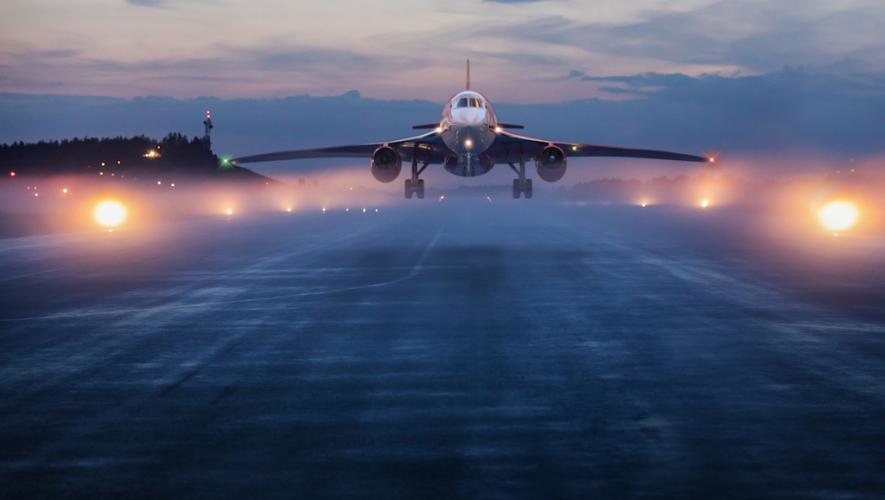Latest FutureFlight Videos
All Videos
FUTURE FLIGHT
Sign up for our free newsletter
News and analysis covering cutting-edge aviation technology and business models, including zero-carbon propulsion, eVTOL aircraft, automation and autonomy, and new infrastructure.
FutureFlight News
Aircraft
Archer Named ‘Official Air Taxi Provider’ for 2028 Olympics in Los Angeles
Team USA and LA28 organizers sign exclusive deal with Archer Aviation

Rotorcraft
Rain Tests Autonomous Black Hawk on Burning Brush
Two weeks of testing highlighted the value of quick-reaction fire suppression

Regulations and Government
Bill Filed To Allow Supersonic Flight over Land in U.S.
Legislation would eliminate Mach 1 speed limit for aircraft if no sonic boom reaches the ground

Aircraft
Spike Aerospace Resurfaces Supersonic Bizjet Candidate
S-512 promises “low-boom” Mach 1.6 travel

Airlines
German Airline Plans To Operate Hydrogen-electric Beech 1900s
Evia Aero plans to operate scheduled services in several parts of Europe

Airlines
UrbanLink Orders 20 More Viceroy Electric Seagliders from Regent Craft
South Florida operator expects first deliveries in 2027

Engines
XTI and VerdeGo Work on Hybrid-electric Propulsion Options
VH4-T propulsion system could be applied to TriFan 600 VTOL and possible uncrewed aircraft

ATC
EASA Certifies First U-space ATM Service Provider For Uncrewed Aircraft
Anra Technologies is ready to launch U-space services across Europe

Engines
Ampaire Scores FAA G-1 for Hybrid-electric Propulsion System
FAA approves first G-1 certification basis for a hybrid-electric aircraft powertrain

Aircraft
Boeing Leadership Shuffle Means New CEO for eVTOL Developer Wisk
Engineering v-p Sebastien Vigneron has taken over from Brian Yutko

Engines
Cargo Operator Plans To Fly Hydrogen-powered Caravan Aircraft
Single turboprop aircraft will be leased from asset management group Monte

Engines
Vertical Confirms Plans for Longer-range Hybrid-electric VTOL Aircraft
New version of VX4 aircraft will fly 1,000 miles with a 1,100-kg payload

Aircraft
SkyDrive Plans Aeromedical eVTOL Flights in Taiwan's Penghu Islands
Doctors and patients in Penghu could fly in SkyDrive's eVTOL aircraft

Avionics
FAA Certifies Universal Avionics Wi-Fi-enabled FMS Tech
Connected flight management system incorporates comprehensive security measures

Aircraft
Honeywell Expands Role with Vertical Aerospace’s VX4 eVTOL Aircraft
U.S. technology group will now provide inceptor controllers for pilots

Engines
Wright Prepares To Expand Electric Propulsion System Tests
Thrust test stand has been manufactured and is being installed in New York

Environment
Boeing and NASA Shelve X-66 Sustainable Flight Demonstrator
Focus of research and development work will shift to ground-based testbed for thin wings

Aircraft
Whisper Reveals ‘Collaborative Logistics Aircraft’ Family
U.S. Air Force funds work on quiet, autonomous, hybrid-electric cargo aircraft

Aircraft
Bombardier Eyes Uncrewed Future for EcoJet Technologies
In the shorter term, Global 8000 is nearing completion

Engines
Diamond Aircraft Leads Hydrogen-electric Hybrid Propulsion Project
Meanwhile, eVTOL aircraft developer Volocopter is being integrated by new owner Diamond




